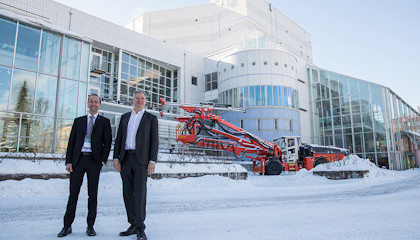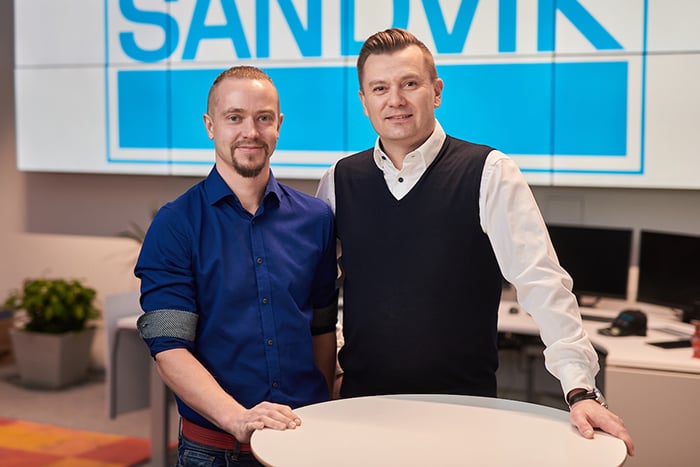Future of robotics
Robots will play an increasingly important role in business and life in general, going forward. Digitalization, machine learning and artificial intelligence are fast-forwarding advancements and opportunities.

At the European Robotics Forum 2018 in Tampere, researchers, robotic scientists and experts discussed what the future of robotics will bring:
Reinhard Lafrenz, PhD, Secretary General of euRobotics Aisbl
Robotics especially in combination with AI (artificial intelligence) will create a radical change in society. We need to develop systems in an ethical and human way to support us in an environment with an aging population and a demand to get support from technical side where human capacity is not enough or is missing. We are aiming for systems what allow us to live our lives with dignity in our homes.
Jyrki Latokartano, Chairman of the Robotics Society of Finland
I believe we’ll see more and more robots in areas other than industrial manufacturing, which has been the traditional area for robotics. Robots are used to free the potential of humans for meaningful tasks while the machines are doing the repetitive, boring, dangerous and un-ergonomic tasks. It will begin with professional applications but come to our homes too, but with a small delay.
Marketta Niemelä, MPs, PhD (IS), Project manager, Senior Scientist, VTT Technical Research Centre of Finland Ltd
We are witnessing a gradual introduction of service robots into various sectors of society. The first robots are simple, but step by step they will become more autonomous and smart, and their performance in unstructured environments crowded by humans will improve. We’ll see robots in service tasks, not just dull, dirty or dangerous ones but also in those that require social interaction skills. The aging population is a particularly strong driver to robotics research and innovation. Development of robots for health and elderly care and companionship calls for societal and ethical discussions to ensure they are accepted by the general public, and in particular by elderly and vulnerable people.
Minna Lanz, PhD, Associate professor, Tampere University of Technology
The emergence of new types of robotics technologies accompanied with perception, reasoning and contextual understanding will impact the business landscape in future. The breakthrough technologies both allow and force us to develop completely new types of product services, service production and delivery models. This will affect the educational systems as well, since it takes time to master every new technology. We have to develop new types of formal and non-formal learning modules and methods to support the continuous education and learning of the employees.
Jani Vilenius, PhD, Director, Technology Development, Sandvik Mining and Rock Technology
 Tuomo Kivelä and Jani VileniusRobotics will continue to accelerate innovation, thus disrupting and changing the paradigm of business operations in many industries. Collaborative robots (cobots) can be the next big thing. Many industrial robots operate regardless of their surroundings. Human bypassers are well advised to keep a safe distance. Cobots on the other hand, must be “inherently safe.” They have sensors to slow them down or immediately stop them if they realize that humans are too close.
Tuomo Kivelä and Jani VileniusRobotics will continue to accelerate innovation, thus disrupting and changing the paradigm of business operations in many industries. Collaborative robots (cobots) can be the next big thing. Many industrial robots operate regardless of their surroundings. Human bypassers are well advised to keep a safe distance. Cobots on the other hand, must be “inherently safe.” They have sensors to slow them down or immediately stop them if they realize that humans are too close.
Tuomo Kivelä, PhD, Principal New Technologies Researcher, Sandvik Mining and Rock Technology
Robotics and automation are hot topics at the moment and they have received a great amount of attention. This boost enables researchers and experts to further develop these topics. I am convinced that in the near future we will see assisting systems turn into more autonomous systems.
Jussi Puura, M.Sc., Automation, Technology Specialist, Sandvik Mining and Rock Technology
Mining robotics face the same trends that are currently visible in factory robotics and in the automotive car industry. There are two main trends. First is the safe operation of a robot near or together with a human. In factories, industrial robots are coming out of the cages working safely alongside people. In the automotive industry, autonomous cars will be driving on the same roads as human-operated cars and pedestrians. The other trend is autonomy. The machines plan how to execute a specific task and then execute it, simultaneously re-planning and changing the plan if problems arise. Both trends will become a reality with mining robots as well as with heavy mining machinery working in changing environments in the middle of people and manually operated equipment.